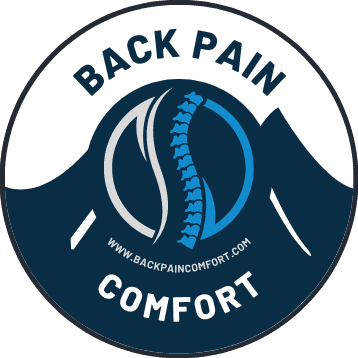
We’ve all been there – that sudden twinge in your lower back after lifting something heavy, or the aching pain that seems to develop mysteriously and persists for weeks. Back pain is a common ailment that affects people of all ages. But, before resorting to pain medications or considering surgery, have you ever thought about the wonders of physical therapy? In this article, we will delve deep into the many benefits of physical therapy for back pain, explaining why it’s often considered a top choice by healthcare professionals.
Non-Invasive and Drug-Free Solution
The allure of quick fixes, like painkillers or surgery, can be tempting. However, these solutions often come with risks, side effects, or prolonged recovery times. Physical therapy, on the other hand, offers a non-invasive and drug-free approach. Through targeted exercises and hands-on techniques, physical therapists aim to alleviate pain at its source, without the need for external interventions.
Personalized Treatment Plans
Every individual’s back pain is unique, stemming from different causes and manifesting in varied ways. Physical therapists understand this uniqueness and create personalized treatment plans tailored to each patient’s specific needs. Whether your pain is due to a sports injury, poor posture, or age-related degeneration, a trained therapist will design exercises and strategies to address your particular situation.
Improved Mobility and Strength
Physical therapy does more than just treat the immediate pain. It aims to strengthen the back muscles and improve overall mobility, ensuring that the spine is well-supported and reducing the risk of future injuries. By focusing on both flexibility and strength, physical therapy helps individuals regain their full range of motion and return to their normal daily activities with ease.
Education and Prevention
Knowledge is power, and this is especially true when it comes to managing back pain. Physical therapists educate their patients about the root causes of their pain, proper body mechanics, and techniques to prevent future injuries. By understanding what’s happening in your body and how to protect it, you are better equipped to keep back pain at bay in the long run.

Holistic Approach to Wellness
Physical therapy isn’t just about addressing the physical aspects of pain. Therapists also consider the emotional and psychological well-being of their patients. Chronic back pain can lead to feelings of frustration, anxiety, or depression. A comprehensive therapy program will often include strategies to cope with these emotional challenges, ensuring that the patient’s overall well-being is catered to.
Enhanced Postural Awareness
One of the primary contributors to back pain, especially in today’s digital age, is poor posture. Whether it’s the result of slouching at a desk, hunching over a smartphone, or simply not standing upright, bad posture can lead to prolonged back issues. Physical therapists place significant emphasis on postural education. They provide guidance on how to sit, stand, and move correctly, ensuring the spine is in alignment. By incorporating these lessons into daily life, many individuals find they not only experience reduced pain but also witness improvements in their overall posture and bodily alignment.
Cost-Effective in the Long Run
The economic implications of chronic back pain can be daunting. Continuous doctor visits, frequent medication, and potentially even surgical procedures can add up. Physical therapy, however, presents a cost-effective solution. While there’s an upfront cost for sessions, the benefits reaped—like reduced pain, fewer doctor visits, and a decreased need for medication—often lead to significant long-term savings. By investing in physical therapy, you’re not just investing in pain relief but also in a proactive approach that may minimize future medical costs.
Accelerated Recovery Time
For those who have undergone surgery or have had significant injuries, the path to recovery can seem lengthy. However, physical therapy can expedite this process. By engaging in guided exercises, improving flexibility, and enhancing strength under the supervision of a trained professional, patients often witness a quicker return to their daily routines. Furthermore, this accelerated recovery isn’t just about speed; it’s about ensuring that the healing process is thorough and reduces the chances of recurrent pain or injury.

Conclusion
Back pain might be common, but enduring it doesn’t have to be the norm. Physical therapy offers a multifaceted approach that addresses pain at its root, promotes healing, and focuses on prevention. With its non-invasive techniques, personalized care, and holistic approach, physical therapy is not just about getting back to where you were before the pain – it’s about moving forward to a healthier, stronger future. If you or someone you know is grappling with back pain, consider unlocking the benefits of physical therapy. Your back, mind, and spirit will thank you.






